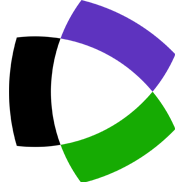
Alice Louis Yousif
Research Interests
| Gender | FEMALE |
|---|---|
| Place of Work | Technical Research Center |
| Qualification | Master |
| Speciality | Animal production |
| mti.lec151.alice@ntu.edu.iq | |
| Phone | 07709549288 |
| Address | Alhamdaniyya, Nineveh, Mosul, Iraq |
Skills
Teaching (100%)
Research skills (80%)
Computer (90%)
Administrative skills (82%)
Arabic language (100%)
Working Experience
انتاج دواجن - تغذية دواجن - تغذية حيوان - تربية وتحسين حيوان - مشروع - ادارة دواجن - صناعات غذائية - صناعة البان - تقنيات مفاقس - ماشية لحم - [مدرس مساعد]
Jan 10, 2018 - PresentNorthern Technical University
Publications
Physiological and Histological Consequences of Growth Stunting in Broiler Chickens
Dec 27, 2024Journal Advances in Animal and Veterinary Sciences
publisher Advances in Animal and Veterinary Sciences
DOI https://dx.doi.org/10.17582/journal.aavs/2025/13.1.96.102
Issue 2309-3331
Growth stunting is one of the leading causes of low productivity in poultry and is negatively affecting animal wellbeing. This study aim to determine the effect of growth stunting on body weight at different age points, evaluating changes in blood and biochemical parameters and assessment of histological alterations in the liver of stunted chickens compared to health birds.. For this purpose, a total of 300 broiler chicken were collected with age of either 14 or 28 days over the period of 5 months (May-Oct, 2022). Birds belonging to either of two categories (n=150 normal-growth or n=150 exhibiting growth stunting) were sacrificed and examined. The intestinal lengths (total and small intestine segments) were measured and blood samples were collected to analyze red blood cell (RBC) count, white blood cell (WBC) count, hemoglobin concentration, and packed cell volume (PCV). Additionally, blood serum was separated to determine the concentration of total protein, cholesterol, and glucose which are key biochemical markers that provide insights into protein metabolism, lipid profile, and blood sugar regulation, respectively. Liver tissues samples from were subjected to histological examination. The results revealed a substantial decrease in body weight (160 gm) in stunted birds compared to the normal control group (479 and 1488 gm) at both 14 and 28 days of ag, respectively. Furthermore, we observed a significant decrease in cellular and biochemical blood parameters in stunted birds where RBC (1.65 and 1.83) showed a lower (p<0.05) count compared to health control (2.24 and 3.76) at both 14 and 28 days of age, respectively. This also applies to HB levels (٧.٦٢ and ٩.٤٤) in stunted birds compared to healthy birds (9.33 and12.65) at the ages of 14 and 28 days, respectively. Histological analysis of the liver from stunted chickens showed various changes, including areas of necrosis and fibrosis. Collectively, these findings highlight the detrimental effects of growth stunting, characterized by reduced weight gain, altered blood cell counts, and liver damage. This study provides valuable insights for optimizing broiler management practices to ensure optimal growth and health for enhanced productivity.
The Effect of Adding Different Levels of Saccharomyces Cerevisiae to the Quail Birds Feed or Drinking Water on Characteristics of the Egg Production and the Qualitative Characteristics of Local Quail Eggs
Aug 1, 2023Journal NTU Journal of Agricultural and Veterinary Sciences
publisher NTU Journal of Agricultural and Veterinary Sciences
DOI https://doi.org/10.56286/ntujavs.v3i2.556
Issue 2788-9904
Volume 3
The aim of this study is to see effect of adding different levels Saccharomyces cerevisiae to the feed or the drinking water on the characteristics of eggs production and the qualitative characteristics of the local quail eggs. The levels (0, 1, 1.5, 2 and 2.5%) of yeast to the feed and 0.5 g / L in the drinking water for 324 birds as a total number. The birds were distributed randomly into six treatments, each of which included 54 bird/treatment and with 6 replicates (9 birds/replicate). The statistical analysis results showed A significant improvement were showed that there was an improvement in the daily production rate of eggs (%H.D.P.), the mass of the egg (g/female bird/week) and the number of the eggs for the treatments characterized with high levels of Saccharomyces cerevisiae in the feed (2 and 2.5% of Saccharomyces cerevisiae in the feed). From the other hand, there was no significant effect on the weight of the and the average fodder consumed for the treatments that include Saccharomyces cerevisiae compared to the control treatment. Feed conversion ratio rate was improved in the third treatment and was higher compared to the rest of the treatments as its value was (3.17). Yet, there were no significant differences between the rest of the treatment and the control treatment in terms of the coefficient of Feed conversion ratio. Moreover, it was observed that there was a significant improvement in the weight of the egg shell and its thickness in favor of the Saccharomyces cerevisiae addition treatments compared to the control treatment. As for the characteristics of the index of yolk, white, Hue unit and the shape of the egg, the differences were not significant compared to the control treatment.
The Study of the Effect of Adding Different Levels of Saccharomyces Cerevisiae to the Fodder and Drinking Water on the Productive Performance and Intestine Bacteria of the Local
Dec 31, 2021Journal Tikrit Journal for Agricultural Sciences
publisher Tikrit Journal for Agricultural Sciences
Issue 1813-1646
The current study was conducted in a poultry farm at the College of Agriculture and Forestry, Mosul University. It aims at studying the effect of adding different levels of Saccharomyces cerevisiae to the fodder and drinking water on the production characteristics and the number of intestine bacteria of the local quail. The levels 0, 1, 1.5, 2 and 2.5% of yeast added to the fodder and 0.5 g/liter of drinking water. In the research 432 one-day old quail chicks were used and distributed randomly into six treatments, each of which included 72 chicks (72 chicks/treatment) and six replicates (12 chicks/replicate). Statistical analysis results showed a significant increase in the average living weight, weight increase, average consumption of fodder and the coefficient of the feed conversion ratio for the fourth, fifth and sixth treatments (2, 2.5 yeast in the fodder and 0.5 g. liter of water) compared to the other treatments and the control treatment. There were no significant differences in the dressing percentage and moralities for all the experimental treatments. From the other hand, it was observed that there was a significant decrease of the total number of bacteria in the birds fed with the fourth treatment compared to the other treatments and there was no significant difference when adding the yeast to the drinking water and the treatment involving 1% of yeast on the total number of the bacteria. There was also a significant decrease in the number of E. coli and Salmonella in the treatment that involve all the levels of Saccharomyces cerevisiae in the fodder. Also, a significant increase was observed in Lactobacilli bacteria for the treatments involving 1.5 and 2% of the Saccharomyces cerevisiae compared to those in other treatments.






